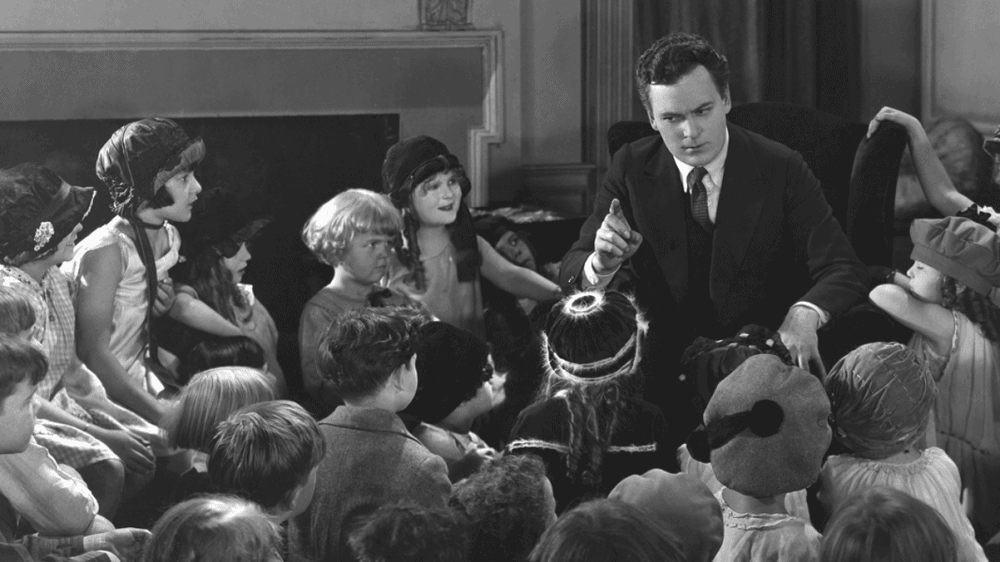Did you know that only 63% of participants remember the stories told in presentations while only 5% remember statistical data? I think even only this information will help us understand how difficult our work is. Yes, our work is difficult but not impossible. We can prepare presentations that are astonishing to the audience with some knowledge and a little experience without needing a magic wand.
An impressive presentation means a relationship between the speaker and the audience that leaves a trace. The way to design an impressive presentation is through planning details carefully such as convenience to the audience, opening, narration, content and storytelling, visual elements, presentation and conclusion steps.
What should you plan when designing a presentation?
What are the tricks of creating an effect on the audience?
In this article I will be talking about the tricks to plan a presentation starting from the very beginning. Are you ready to change statistics with your presentations?
Know your target audience
Company employees, customers or potential investors; to whom are you giving your presentation? What you need to do first for a successful presentation will be to consider the answer for the question because, if you know the expectations of your audience, you can both design and present a satisfactory presentation.
When preparing the presentation, it is a good start to determine what you want the audience to have acquired at the end of the presentation or what you want them to remember. These are basically the goals of the presentation. Once you have decided on your goals, you can determine how you should communicate with your audience to achieve this goal. You should always look for ways to speak the same language as your audience.
Talking the language of the target audience means speaking the same language. I would like to say that if your audience does not have full knowledge of industry-specific jargon, you should use a more descriptive or simpler language. The presentation cannot be successful in achieving its goals no matter how creative or rich it is as long as it is narrated with an unknown jargon.
At this stage, ask yourself these questions:
You may not always be able to give a clear answer to these questions. Nevertheless, give yourself time to reach enough knowledge to prepare your presentation in the best possible way.
Have an attractive opening
The first effect you create when you show up is one of the most important factors determining the destiny of the presentation because it gives hints on how you will maintain the presentation. Besides this, an impressive introduction is also one of the important parts for the audience to give attention, for you to attract their attention and to provide credibility. Your contact with the audience will continue the way it starts.
Give tips about what you will talk about in the introduction and where you want to reach with this presentation. There are a lot of techniques you can use to get attention. Impressive photos, a story that creates emotion on the content that you will mention, questions that draw attention to your narration, a video that arouse curiosity, and even striking data can help you make a remarkable opening.
You do not always have to be very creative. Depending on the subject you will talk about, sometimes a very minimal style can give results that you have not expected. Just try not to wander around focusing on the creative part of work. Perhaps you are looking for different presentations that may be examples and you find wonderful presentations. Note, however, that not every presentation will give the same result with the same materials or methods

Design a clean and planned narration
I recommend that you set up a road map at the beginning to ensure that your presentation is transferred in a well-coordinated way. You can also share this plan with the audience when necessary. So you help them follow you and build a bond with the subject.
To read more about this extremely important subject which you need to be aware of when designing your presentation, you can check out the article “Important Storytelling and Narrative Techniques for Impressive Presentation Design“ previously published!
From time to time you can improvise in your presentation. However, every presentation must be a previously planned framework. Thus, it is possible that the audience may keep what you tell in mind and your words serve a purpose.
Create an impressive presentation structure by identifying the most appropriate technique for your content and the effect you want to create. Decide when you need to tell the story or when to give samples by designing the introduction, development, and conclusion sections separately. A clear and planned narration is very important for your presentation not to be routinized and not to get out of control.

Carefully specify data or ideas that you will present
One of the common mistakes is that the effort to tell everything literally once on the stage. However, considering the limitation of the time of your stay on the stage and the possibility of fatigue and boredom of the spectator, carefully specify the data or ideas you will present to use your time efficiently and achieve the highest possible conversion.
As these ideas emerge, your presentation will be shaped to some extent spontaneously. You can determine what you will say by considering your time. If you have 15 minutes in total try not to mention six different topics. It may be more effective to collect your words under up to three main subtitles. So be careful to choose the most important subtitles.
For example, if you are promoting a new product, mention really interesting features of the product. Do not spend a long time on features similar to almost any other product. Or, if you are presenting at the year-end meeting for company employees, you should be able to tell how important all employees are by mentioning almost every department. You can focus on narrowing your list and you can cause employees of these departments loseinterest and motivation when you do not mention departments that have an indirect impact on the recent data. Take care to determine what you will tell for this reason.
Finding answers to the following questions can make your job easier while choosing what to mention:

Choose your stories well
Storytelling is one of the most influential elements of presentations, but only when the right stories are chosen and when they are told in sufficient time. There are different ways you can benefit from stories. For example, as you can spread a well-narrated story for the whole presentation, you can use shorter stories when you want to create a certain feeling in the audience.
One of the most common mistakes made in storytelling during presentations is to talk about personal success stories constantly. The audience wants to hear your story, of course, but keep these stories at a level that will motivate them because the audience actually wants to add something to themselves and to see that they are valued. This is basic human psychology. Make sure your stories touch the audience’s life. Thus, the first step in planning is once again emerging.

Leave mark with your visual elements
Visual elements, along with stories and striking data are the most memorable parts of presentations. All the details from concept design to font selection are important to turn this into an advantage. The visual character you choose throughout your presentation determines the atmosphere of your presentation. You can add a livable feature to this atmosphere using supportive photo and graphic selection.
The colours you use do not always have to be your corporate colours. By a more conceptual approach at this stage, you can choose colours and therefore design that brings your corporate identity together with the atmosphere of presentation. Thus, your presentation will have a much greater impact on the power of visual elements.
When you visualize your narration correctly, you will have increased your chances of being able to leave mark and to draw attention. To make sure that the visual elements you use in your presentation are served in the correct composition, be sure to check out my related article.

Determine your style as a presenter
The style chosen by the presenter should be in accordance with all other factors. The style of the presenter determines the culture of the presentation. For this reason, your attitude, your mimics and the way you communicate with the audience. When setting your character as a presenter, you should consider the emotion and effect you want to create.
Are you a team leader or a part of the team? Are you a hero revealing a new idea or a grateful boss who thanks for great work? You can really create effect as a presenter when you determine your style and are fully aware of this style. If you want to leave mark with your presentation in minds, whatever your style is, you need to establish communication in the same language.

Prepare a final which summarises the entire presentation
Even if you have made a flawless presentation, you will take the step that moves the presentation to the future in the final. One of the responsibilities of being the person on the stage is to inspire on a going-forward basis. Focus on creating a promising impact on the final. Now you have already said everything you want to say, how do you want people to remember you after the presentation?
At the end you can briefly summarise the presentation, but make sure the summaries are short and do not include any new ideas or information. This may cause people think that the presentation is incomplete. Make sure everything you say is complete and give a clue as to what you and the audience will experience from then on.
You have successfully completed your presentation with a finale that convinces people to act and take responsibility together. Even mentioning what will happen after the presentation increases the effectiveness you create, enabling participants to realize what they have earned from this presentation.
As a result, impressive presentations are not a miracle, thanks to focusing on the audience, using an appropriate language, constant observation and remarkable narration. In order for the audience to be influenced by the presentation, you have to plan all the details and it is very important that you have the full control on the stage.
Each plan has unique dynamics. But there is one thing in common for every presentation to be effective: instant observation and the right plan. The observation takes place during the presentation, especially as the plan continues before and after the presentation.
On the other hand, it is not easy for the audience to feel inclusive, to be influenced by the presentation, and to focus their attention to the end of the presentation. With a successful presentation plan, a unique communication alignment between the audience and the speaker can be achieved. For this reason, be sure to take each of the above steps carefully.


Presentation / Mar 21, 2024








Presentation / Aug 02, 2023